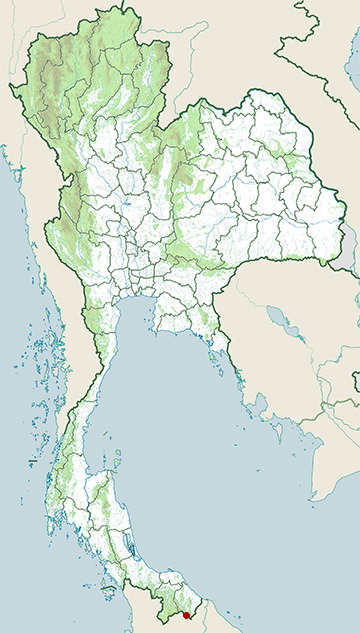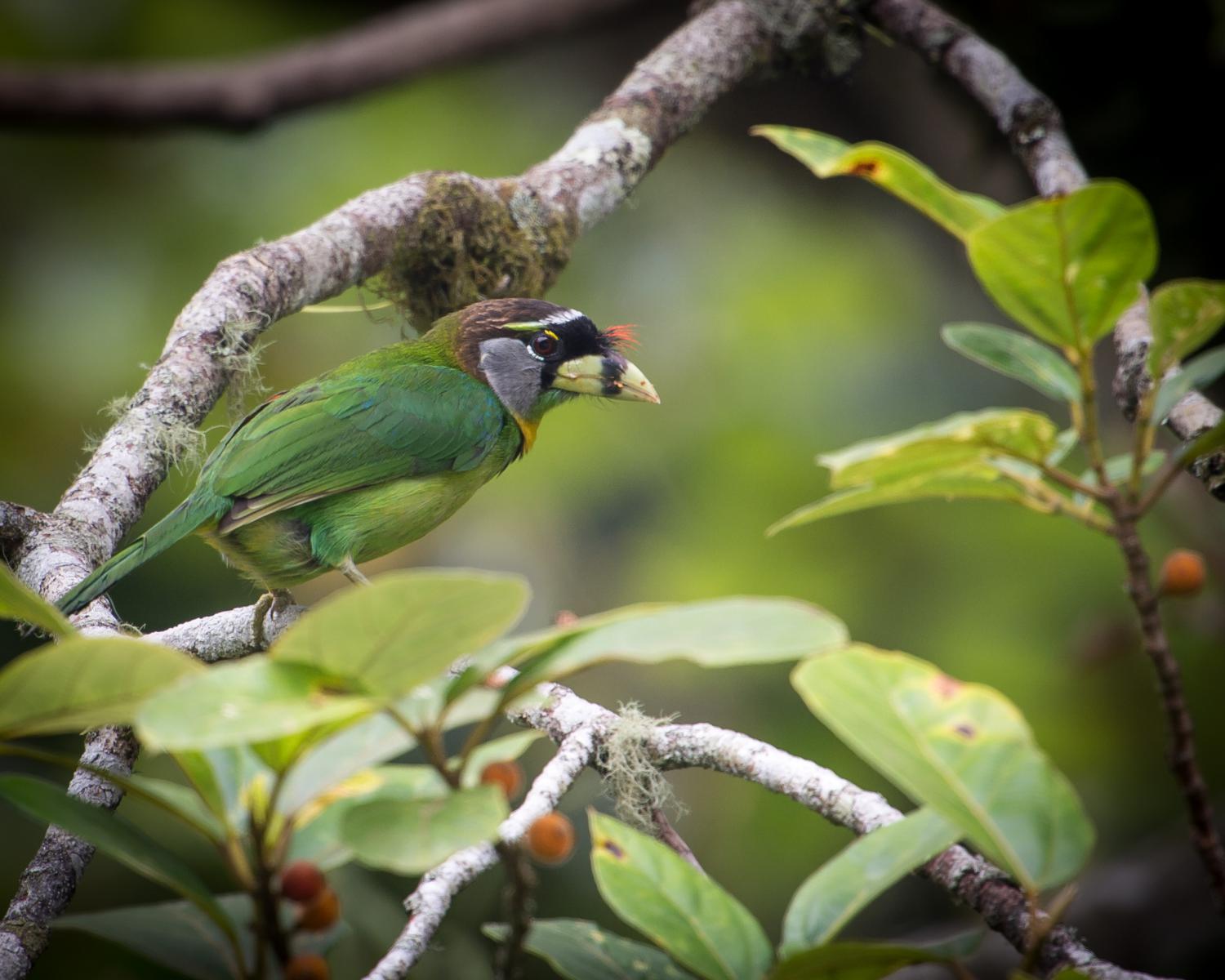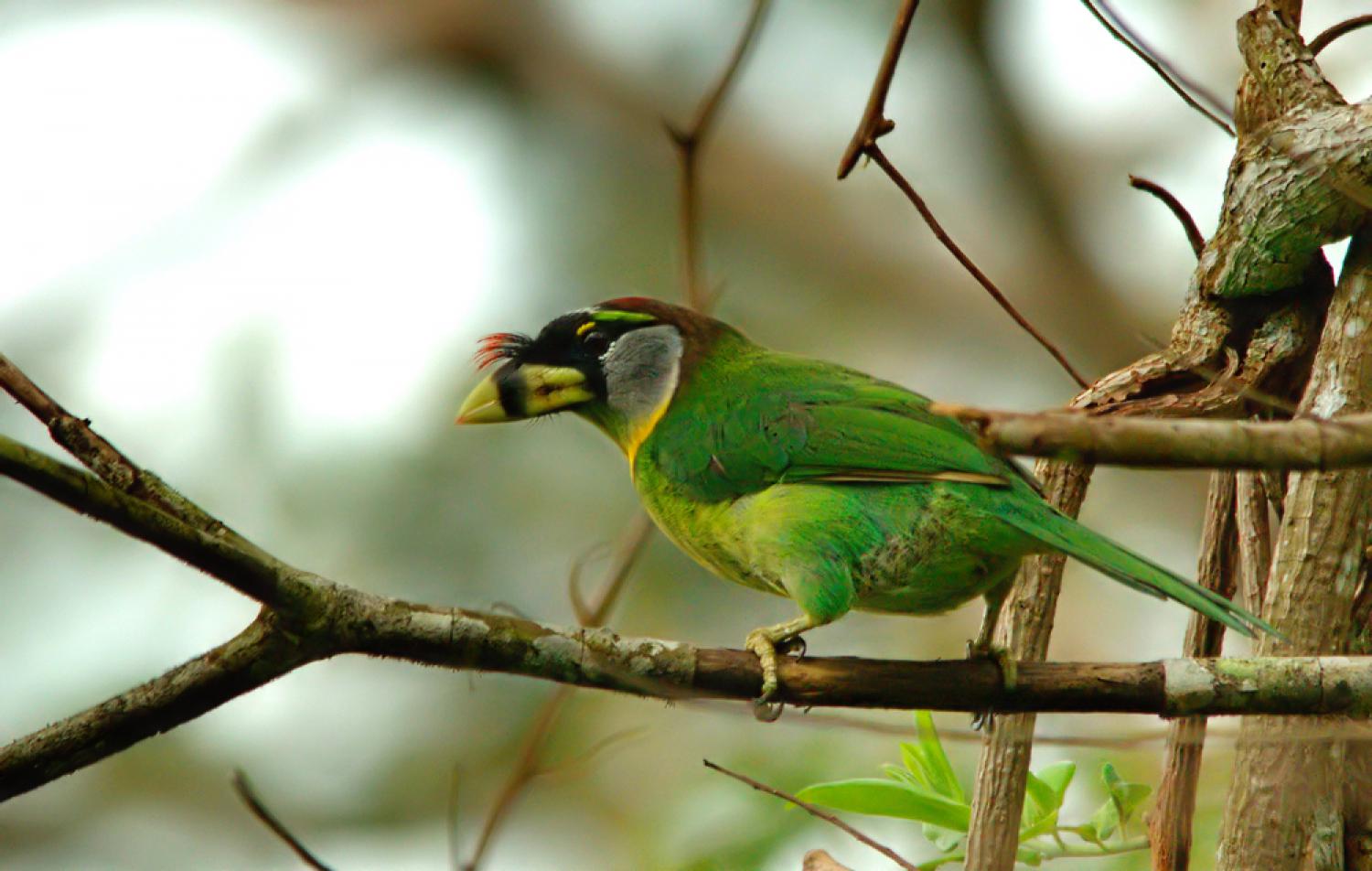Species of Thailand
Fire-tufted barbet
Psilopogon pyrolophus
Salomon Müller, 1836
In Thai: นกโพระดกหนวดแดง
The fire-tufted barbet (Psilopogon pyrolophus) is a species of bird in the Asian barbet family Megalaimidae. It is native to Peninsular Malaysia and Sumatra, where it inhabits tropical moist lowland and montane forests. It has been listed as Least Concern on the IUCN Red List since 2004.
Its scientific name was proposed by Salomon Müller in 1836, who described a barbet from Sumatra.
Description
The moderately large bird (28 cm), the adult birds are overall green in appearance and have a brownish-maroon nape, grey lores, white band on the forehead, throat green, followed by a bright yellow band before a black band, appearing like a necklace separates the belly. The bill is fawn colored with a black vertical band. Tufts of feathers at the base of beak. Upper tufts fiery orange in males.
Distribution and habitat
The fire-tufted barbet inhabits broad-leaved evergreen montane forests between 1070 and 2010 m on the Malay Peninsula and Sumatra.
Behaviour and ecology
The fire-tufted barbet is a resident bird and feeds on figs, other fruits, arthropods and insects. Its call is very similar to that of cicadas.
Threats
The primary threat to this species appears to be illegal capture and trade as a pet.
This article uses material from Wikipedia released under the Creative Commons Attribution-Share-Alike Licence 3.0. Eventual photos shown in this page may or may not be from Wikipedia, please see the license details for photos in photo by-lines.
Category / Seasonal Status
Wiki listed status (concerning Thai population): Accidental
BCST Category: Previously published records questionable owing to possibility of mistaken identification
BCST Seasonal status: Resident or presumed resident
Scientific classification
- Kingdom
- Animalia
- Phylum
- Chordata
- Class
- Aves
- Order
- Piciformes
- Family
- Megalaimidae
- Genus
- Psilopogon
- Species
- Psilopogon pyrolophus
Common names
- Thai: นกโพระดกหนวดแดง
Conservation status

Least Concern (IUCN3.1)
Photos
Please help us review the bird photos if wrong ones are used. We can be reached via our contact us page.
Range Map

- Hala-Bala Wildlife Sanctuary

